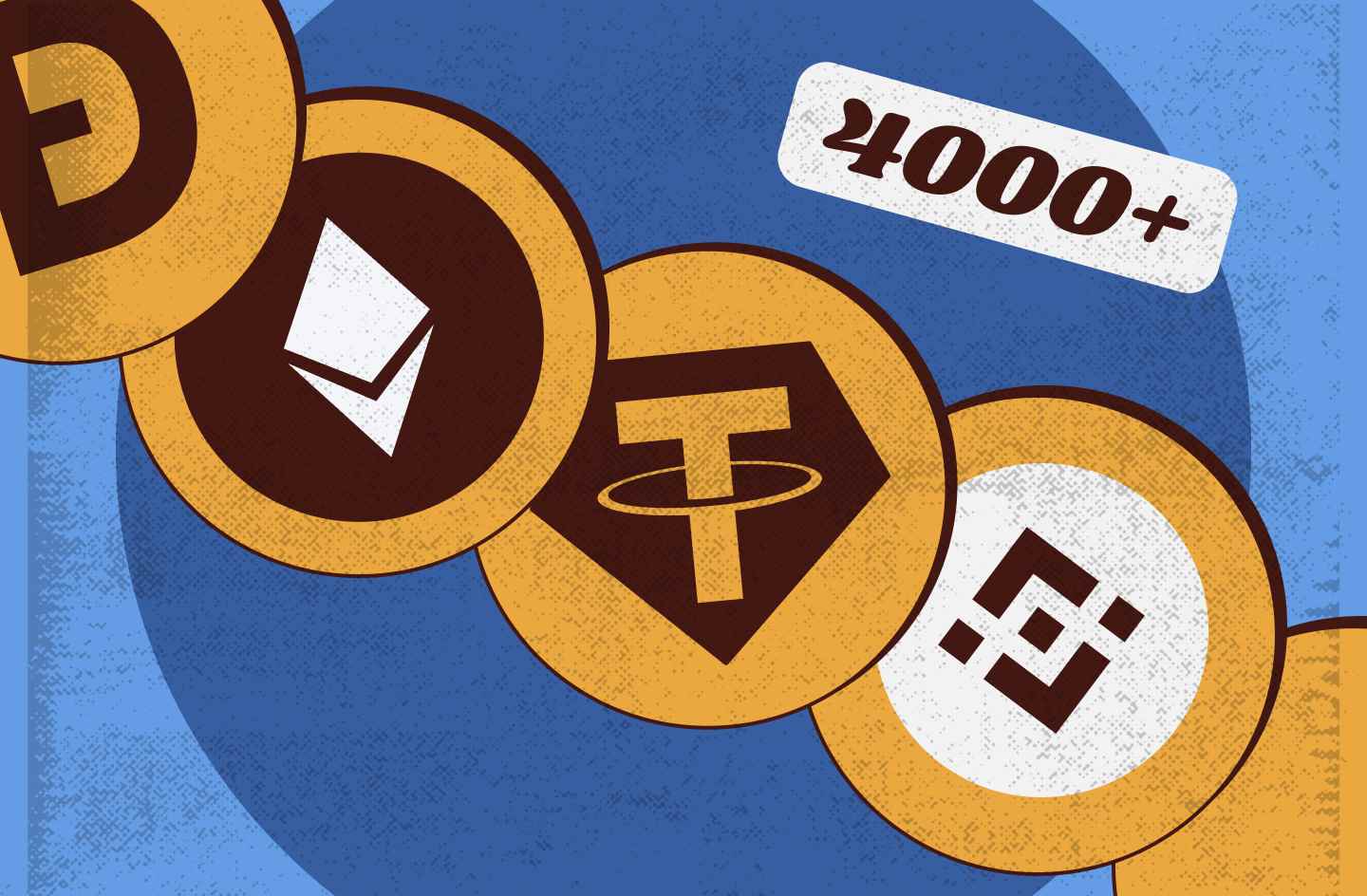Cryptocurrency refers to digital currency or virtual money, which allows you to transfer funds without intermediaries over the Internet. Crypto transfers within the network are free since there is no “middle-man” — the system processes each transaction. Fees are charged as a reward to network participants for making the network work and are minimal compared to the fees of banks, financial intermediaries or payment systems.
The first, largest and best-known cryptocurrency is Bitcoin (BTC).
How Does Cryptocurrency Work?

Cryptocurrency exists solely in the digital records of a database that describe specific transactions. This database is called “blockchain” — this technology is used in all crypto projects. Blockchain is a ledger of all transactions, the current version of which is stored on all devices participating in the network. That is why the network is called a distributed ledger. The data in this ledger cannot be changed retrospectively or be falsified, ensuring the network’s security. It also provides a characteristic feature of cryptocurrencies — the irreversibility of transactions.
Entering only valid information into the database is achieved by consensus of all network participants. Consensus algorithms differ between cryptocurrency projects. Bitcoin (BTC) uses the most common variant — Proof-of-Work. The validation of transactions and adding information to the database is done using cryptography, which is why cryptocurrency got its name; the prefix “crypto” means the term “cryptography.” In this way, the most crucial property of cryptocurrencies is achieved — the protection of data and partial anonymity of users. It is partial because circumstantial data can most often establish the identity.
Cryptocurrency issuance can be done in several ways and depends on the consensus mechanism. The most common option, characteristic of the Proof-of-Work algorithm, is automatic issuance as a reward to network members for adding new blocks. This process is known as mining. The amount of issuance in most crypto projects is programmatically limited and decreases over time, which maintains the value of the cryptocurrency. No physical or financial assets provide value to cryptocurrencies.
Crypto Infrastructure

The growing popularity of cryptocurrencies has contributed to their active development and market formation. All cryptocurrencies created after Bitcoin (BTC) are referred to as altcoins. As of April 2022, there are more than 9,000 active altcoins, the largest being Ethereum (ETH), which is no longer just a cryptocurrency, but a digital environment for creating decentralized apps, with cryptocurrency itself playing the role of an economic incentive for network participants initially.
A large-scale digital infrastructure has formed around cryptocurrencies:
- mining companies and pools;
- cryptocurrency exchanges;
- sidechains and layer 2 protocols;
- decentralized financial services, etc.
All this turned cryptocurrencies into a full-fledged analog of traditional finance, integrating them into the global financial system. Cryptocurrencies have become almost all analogs of traditional financial instruments while retaining the principles of decentralization.










